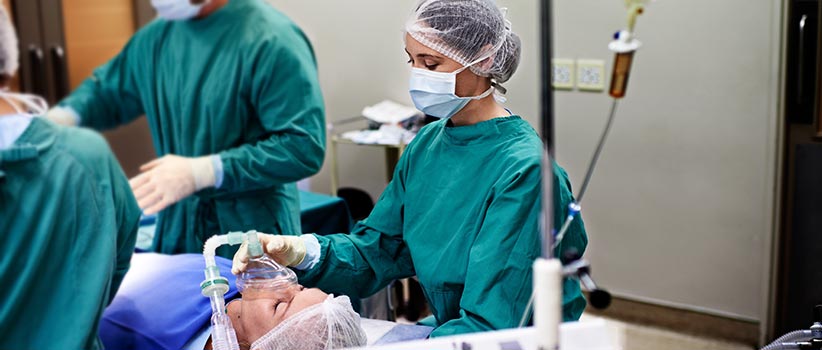4 Steps to Become a Nurse Anesthetist (CRNA)
We review some common steps to become a certified registered nurse anesthetist below. Depending on your specific pathway, these may change.
1. Become a Registered Nurse
Nurses who want to become a CRNA must be licensed and practice as a registered nurse in a U.S. state or territory. To become a registered nurse, you may need to complete an approved registered nursing education program and pass the NCLEX-RN exam.
You may choose to complete an approved nursing program, associate degree, Bachelor of Science in Nursing (BSN) or a Master of Science in Nursing (MSN). Requirements for RN licensure will vary by state.
2. Apply to a CRNA Program
CRNA programs are accredited by the Council on Accreditation of Nurse Anesthesia Educational Programs (COA). In addition to RN licensure and practice requirements, common entrance requirements include a GPA of 3.0 or above and a combined score of 300 or more on the Graduate Record Examination (GRE). Be sure to check the programs you’re interested in for exact entrance requirements.
The length of CRNA programs vary depending on the institution offering them. Online CRNA programs may offer students flexible schedules and the ability to participate in live classroom discussions. The online programs are held to the same accreditation standards as the on-campus programs.
3. Apply for the National Certification Examination (NCE) from the National Board of Certification and Recertification for Nurse Anesthetists (NBCRNA)
The certification exam’s primary function is to ensure that nurse anesthetists have the knowledge and skills to practice safely and effectively. It also protects the value of the CRNA credential. Students can sign up to take the Self-Evaluation Examination during their educational program to gauge their progress and prepare for the National Certification Examination evaluation. After the initial exam, CRNAs must take the Continued Professional Certification Exam every four years.
NBCRNA certification is required in all states to use the title “nurse anesthetist,” according to the American Association of Nurse Anesthetists.
4. Apply for CRNA Licensure in Your State of Practice
CRNAs are licensed to practice in all 50 states and the District of Columbia. In many states, CRNAs are classified as a type of advanced practice registered nurse and must be licensed by the relevant state licensing authority. Check the nursing licensing requirements in your state.


